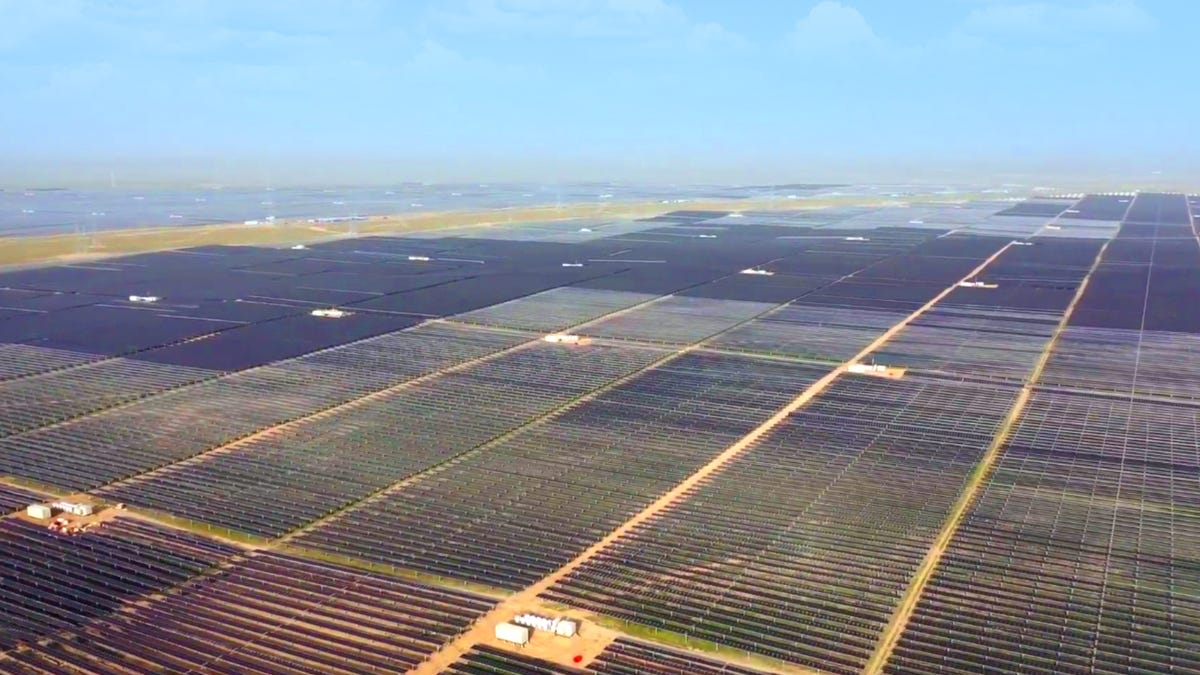China's biggest-ever solar power plant goes live
The world leader in solar power this week connected a 2.2GW plant to the grid. It's the second largest in the world.

The solar park in Qinghai, China, with a 2.2GW capacity.
Chinese President Xi Jinping last week committed his country to carbon neutrality by 2060. This week, China took a small but tangible step in achieving this goal as the country's biggest-ever solar power station was connected to the grid in the northwest province of Qinghai.
The solar park has a capacity of 2.2GW. That makes it the second biggest in the world, narrowly trailing India's 2.245GW Bhadla solar park. Until now, China's biggest solar station was the Tengger Desert Solar Park, with a capacity of 1.54GW. For comparison, the US' biggest solar farm has a capacity of 579MW.
The power station also includes a storage component, as it includes a 202.86 MWh energy storage plant. Construction on the project was completed in September after just four months.
The solar power station, a collaboration between Chinese renewable technology company Sungrow and state-owned utility Huanghe Hydropower Development, is part of the Communist Party's plan to create a "supergrid" that will transfer wind, solar and hydro energy from the country's west to its far denser east.
See also: Go greener with these cool eco-friendly products in 2020
China is both an asset and a liability in the world's fight against climate change. The country is world leader for solar, wind and hydro-generated power. Yet it remains hugely reliant on coal. In 2020 alone, the country's power industry has proposed 40GW-worth in new coal plants, according to Global Energy Monitor, roughly equivalent to the coal power output of South Africa.
On Sept. 24, Xi said to a United Nations committee that by 2060 China would reach carbon neutrality -- meaning it would not produce more carbon dioxide than it captured. China had previously committed to an emissions peak by 2030, but had not set a target for neutrality.
Under the Paris Agreement, which seeks to arrest global temperature at 1.5 degrees above 1880 levels, most countries aim to reach neutrality by 2050.

